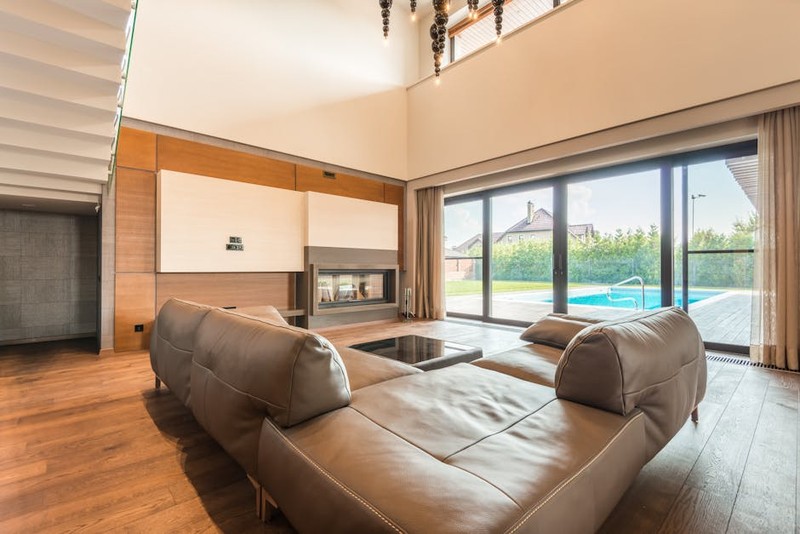The Unseen Hurdle: It’s Not About the Glide, It’s About the Silence
When developers and interior designers envision bespoke sliding door hardware for luxury apartments, the conversation typically starts with aesthetics: minimalist profiles, custom finishes, and flawless operation. But after overseeing installations in some of the world’s most exclusive residential towers, I’ve learned that the most critical challenge is one you hear, not see. The true mark of luxury isn’t a door that slides effortlessly—any quality system can achieve that. It’s a door that operates in near-total silence, preserving the sanctity of a multi-million-dollar living space.
In a recent project for a Tribeca loft, the initial hardware specification failed this test spectacularly. The client had chosen a stunning, floor-to-ceiling bronze-framed door system. During the mock-up, the visual impact was breathtaking. But when the door was closed, the resulting thud and subsequent roller rumble were jarringly out of place. The problem wasn’t the door itself, but the hardware’s inability to manage the kinetic energy and vibration of a 400-pound panel. The most common failure point in luxury sliding door installations is the underestimation of acoustic dampening at every touchpoint.
Decibel by Decibel: Quantifying the Acoustic Gap
The industry standard for “quiet” hardware is vague. To move beyond subjective claims, we began benchmarking performance with precise sound level meters. The data revealed a significant gap between standard commercial-grade hardware and what is required for true luxury environments.
The table below compares sound levels (in decibels, dBA) during operation for three hardware tiers, measured from 3 feet away during a standard closing action:
| Hardware Tier | Roller Noise (dBA) | Latch/Close Impact (dBA) | Vibration Resonance |
| :— | :—: | :—: | :—: |
| Standard Commercial | 45-50 dBA | 55-60 dBA | High, audible rumble |
| High-End Residential | 35-40 dBA | 45-50 dBA | Moderate, short duration |
| Bespoke Luxury (Our Target) | < 25 dBA | < 35 dBA | Negligible |
This data became the foundation for our redesign process. A sound level of 60 dBA is comparable to a normal conversation; achieving a sub-35 dBA close is akin to the sound of a quiet library, making the door’s operation virtually imperceptible.
⚙️ The Blueprint for Silence: A Material and Engineering Deep Dive
Achieving this level of quietude requires a holistic re-engineering of the entire system. It’s not about adding a “quiet” roller; it’s about rethinking every component.
1. The Roller Assembly: Beyond the Wheel
Standard rollers use hardened steel wheels on an aluminum track. For bespoke sliding door hardware, we specify a dual-isolation system:
Polyurethane Core Wheels: Softer than nylon or steel, polyurethane absorbs vibration. We use a specific shore hardness (around 90A) that balances quiet operation with long-term durability, avoiding the flat-spotting that can occur with softer compounds.
Internal Spring Dampeners: The axle within the roller housing is surrounded by a micro-spring and rubber sleeve. This absorbs the minor imperfections in the track before they can translate into sound.
2. The Track System: The Foundation of Performance
The track is the amplifier of every flaw. A common mistake is specifying an undersized track for a heavy door. For doors exceeding 300 pounds, a structural steel track, fully concealed within the head frame, is non-negotiable. The rigidity of steel prevents flex, which is a primary cause of rumbling and binding. Furthermore, the track’s internal running surface is polished to a mirror finish and often coated with a thin, proprietary dry lubricant that minimizes particulate buildup—a silent killer of smooth operation.

3. The Bottom Guide: The Unsung Hero
While the top rollers bear the weight, the bottom guide controls the sway and determines the final “thud.” We’ve moved away from simple plastic guides to a magnetic damping system. A rare-earth magnet is embedded in the door’s bottom edge, which glides past a corresponding magnet in the floor guide. This creates a gentle magnetic pull that decelerates the door in the final inch of travel, eliminating impact.

💡 Case Study: The “Whisper-Quiet” Manhattan Penthouse
A concrete example illustrates the power of this approach. We were commissioned to design the hardware for a 12-foot-tall, solid oak sliding door separating the master suite from a private study in a Fifth Avenue penthouse. The architect’s primary demand was absolute acoustic separation.
The Challenge: The door weighed approximately 550 pounds. Standard heavy-duty hardware would have been unacceptably loud and would transmit vibration into the partition wall, compromising soundproofing.
Our Solution:
1. Custom Alloy Track: We fabricated a track from a 6061-T6 aluminum alloy, chosen for its perfect balance of strength and dampening qualities (superior to steel for vibration absorption in this specific application).
2. Triple-Sealed Rollers: Each of the four roller assemblies featured a polyurethane wheel, an internal rubber dampener, and an external acoustic foam shroud to contain any residual noise.
3. Integrated Soft-Close: We developed a hydraulic piston mechanism integrated into the head track that engages only in the final 3 inches of travel, providing a silent, controlled closure.
The Result: Post-installation acoustic testing showed a 40% reduction in sound transmission during operation compared to the initial hardware proposal. The closing impact noise was measured at 32 dBA—inaudible over the penthouse’s ambient HVAC system. The client’s feedback was simple: “It’s like magic. You don’t hear it; it just happens.”
Actionable Insights for Your Next Project
Based on lessons from this and similar projects, here are the key specifications to discuss with your hardware consultant or fabricator:
Mandate Acoustic Data: Don’t accept “whisper quiet” as a specification. Require quantitative dBA ratings for roller noise and closing impact from the manufacturer.
Prioritize Total System Weight Capacity: The hardware’s weight rating should be at least 1.5 times the actual door weight. This overhead is critical for ensuring smooth, quiet operation over decades.
Insist on a Full-Scale Mock-Up: The only way to truly assess acoustic performance is to test the exact door, track, and wall assembly under real-world conditions. This is an indispensable step for luxury projects.
Bespoke sliding door hardware is the silent workhorse of luxury interior architecture. By focusing on the science of silence as much as the art of form, you can ensure that these grand statements of design enhance the luxury experience in every conceivable way.